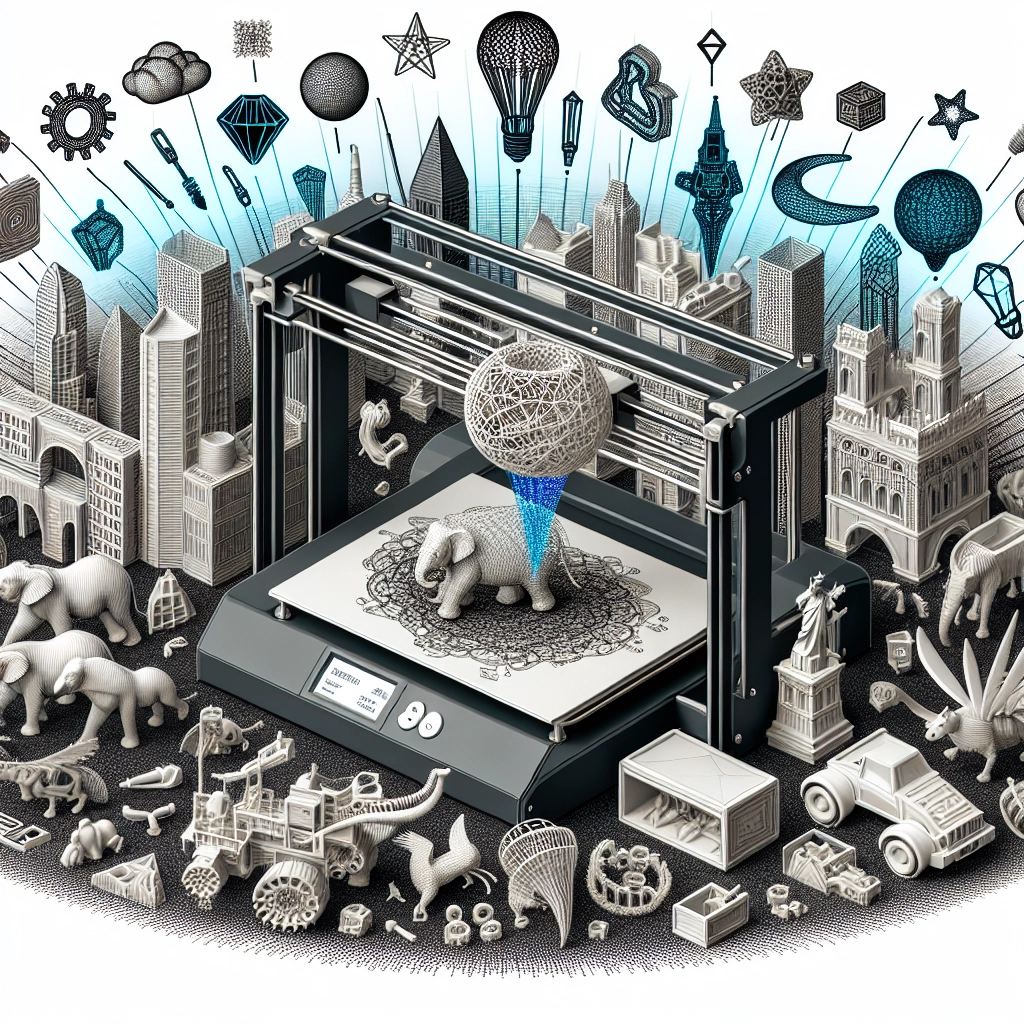Turning Ideas into Reality: The Power of 3D Printing
In a world that seems to move faster every day, innovation is key. From improving healthcare solutions to creating intricate designs for fashion, 3D printing has emerged as a revolutionary technology that allows us to bring our ideas to life in ways we never dreamed possible. But what exactly is it about this technology that inspires such enthusiasm? Let’s dive into the remarkable world of 3D printing and explore how it is transforming our ability to create.
What Is 3D Printing?
At its core, 3D printing—also known as additive manufacturing—is the process of creating three-dimensional objects from a digital file. The magic happens layer by layer, as materials like plastic, metal, or even living cells are added incrementally to build the final product. Unlike traditional manufacturing methods that often involve cutting away material, 3D printing allows for precision without the waste, opening up a whole new realm of possibilities.
Living the Dream: How 3D Printing Empowers Creativity
Have you ever had a brilliant idea that just seemed out of reach? With 3D printing, those ideas can become a tangible reality. Whether you’re an inventor looking to prototype a new gadget or an artist wanting to express your vision in an entirely new format, 3D printing offers the tools to morph your concepts into physical forms.
For instance, consider designers in the fashion industry creating stunning pieces that would be impossible to make with traditional methods. By leveraging 3D printing technology, they can develop intricate and customizable designs that are lightweight and durable. This innovation not only enhances creativity but also caters to a variety of individual tastes and preferences, allowing for a type of personalization that simply wasn’t achievable before.
Revolutionizing Industries
Beyond personal creativity, 3D printing is making significant waves across various industries. Let’s take a look at healthcare, where the potential is simply staggering. Doctors and researchers are using 3D printing to create custom prosthetics tailored to fit individual patients perfectly—this level of personalization enhances comfort and usability, drastically improving the lives of those who rely on these devices.
Furthermore, 3D printing can produce bioprinted organs and tissues, hinting at a future where organ transplants might reduce dependency on donors. Imagine a world where, instead of waiting for a compatible organ, patients could have a replacement part created from their own cells. This is not science fiction; it’s a reality in development.
The automotive and aerospace industries are also leaping on 3D printing. Engineers can create lightweight components that reduce fuel consumption and improve efficiency while ensuring strength and durability. This leads to cars and airplanes that not only perform better but also contribute to a greener planet—definitely a win-win.
Accessibility and Democratization of Creation
One of the most exciting aspects of 3D printing is its growing accessibility. Once a technology reserved for high-tech labs and major corporations, 3D printers have become more affordable and user-friendly. Now, hobbyists and entrepreneurs can set up shop in their own homes, enabling a surge of creativity and innovation on a grassroots level.
Just think about it: a budding inventor can design a prototype in their garage, print it out, and have it in their hands within hours. This democratization of technology levels the playing field, allowing anyone with a vision to turn that vision into a finished product.
Challenges and Considerations
While the possibilities tantalize the imagination, it’s important to recognize that 3D printing isn’t without its challenges. Intellectual property issues arise as it becomes easier for someone to replicate another’s work. Additionally, the technology can sometimes struggle with consistency and quality control. But as advancements continue, it’s likely that these hurdles will be addressed, further accelerating adoption and innovation.
A Glimpse into the Future
The future of 3D printing is incredibly bright, filled with endless opportunities and potential. As we break boundaries in material science, design software, and automated printing processes, we will likely see even more astonishing applications. Whether it’s housing being printed in a day or medical solutions that solve long-standing issues in patient care, we’re witnessing the dawn of a new era in manufacturing and creativity.
In a nutshell, 3D printing is not just a technological advancement; it’s a powerful tool that empowers individuals and industries alike. As we harness its capabilities, we’re not just turning ideas into reality—we’re shaping the future of how we create, innovate, and solve problems. So, what idea do you have in mind? With 3D printing, the sky’s the limit!

